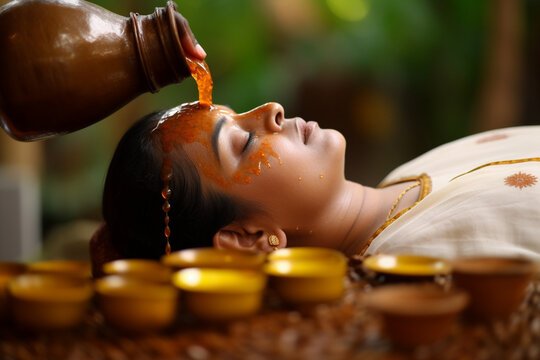Embarking on a Panchakarma detox journey is a profound commitment to holistic well-being, rooted in the ancient wisdom of Ayurveda. This comprehensive cleansing process aims to eliminate toxins, balance the doshas (Vata, Pitta, and Kapha), and rejuvenate the body and mind. Proper preparation is crucial to maximize the benefits of Panchakarma and ensure a safe, effective experience. This guide outlines essential steps to prepare for a successful Panchakarma detox journey.
Understanding Panchakarma
Panchakarma, translating to “five actions,” encompasses five primary therapeutic procedures designed to purify the body:
- Vamana (Therapeutic Emesis): Induced vomiting to eliminate excess Kapha, beneficial for respiratory and skin conditions.
- Virechana (Purgation Therapy): Controlled purgation to remove excess Pitta, addressing digestive and metabolic disorders.
- Basti (Enema Therapy): Medicated enemas to balance Vata, effective for various neurological and musculoskeletal conditions.
- Nasya (Nasal Administration): Nasal instillation of medicated oils to clear head and neck regions, aiding in sinusitis and migraines.
- Raktamokshana (Bloodletting): Blood purification technique used selectively for certain blood-related disorders.
These procedures are tailored to individual needs, emphasizing the importance of personalized preparation.
Essential Preparatory Steps
1. Consultation with an Ayurvedic Practitioner
Begin with a thorough consultation to assess your Prakriti (constitution) and Vikriti (current imbalance). This evaluation guides the customization of your Panchakarma program, ensuring it aligns with your unique health profile.
2. Dietary Modifications
Adopt a light, easily digestible diet to reduce digestive load and facilitate toxin elimination:
- Emphasize: Warm, cooked foods like kitchari (a blend of rice and mung beans), steamed vegetables, and herbal teas.
- Avoid: Processed foods, caffeine, alcohol, and heavy, oily meals.
These dietary adjustments help in loosening toxins and preparing the digestive system for detoxification.
3. Internal and External Oleation (Snehana)
Oleation involves the application of medicated oils both internally and externally:
- Internal Oleation: Consuming prescribed amounts of medicated ghee to lubricate tissues and mobilize toxins.
- External Oleation: Daily self-massage (Abhyanga) with warm herbal oils to enhance circulation and promote relaxation.
This process aids in loosening deep-seated toxins, making them easier to eliminate during the main Panchakarma procedures.
4. Sudation Therapy (Swedana)
Following oleation, engage in steam therapy to induce sweating:
- Herbal Steam Baths: Utilize herbal steam to open pores and further mobilize toxins.
Swedana enhances the body’s ability to expel toxins through the skin, complementing the effects of Snehana.
5. Mental and Emotional Preparation
Panchakarma is as much a mental and emotional cleanse as it is physical:
- Mindfulness Practices: Incorporate meditation, deep breathing, and gentle yoga to calm the mind.
- Stress Reduction: Minimize exposure to stressors and engage in activities that promote mental peace.
A calm and focused mind enhances the body’s receptivity to the detoxification process.
6. Lifestyle Adjustments
Align your daily routine with Ayurvedic principles to support the detox journey:
- Regular Sleep Patterns: Maintain consistent sleep and wake times to regulate bodily rhythms.
- Moderate Exercise: Engage in gentle physical activities like walking or yoga to stimulate circulation without overexertion.
These adjustments create a supportive environment for the body’s natural detoxification processes.
Post-Panchakarma Care
After completing Panchakarma, it’s essential to gradually reintegrate into regular routines:
- Dietary Transition: Slowly reintroduce a broader range of foods, starting with light meals and progressing to more complex dishes.
- Continued Mindfulness: Maintain meditation and stress-reduction practices to preserve mental clarity.
- Follow-Up Consultations: Regular check-ins with your Ayurvedic practitioner to monitor progress and make necessary adjustments.
Proper post-care ensures the longevity of Panchakarma benefits and supports sustained well-being.
Conclusion
Preparing for Panchakarma is a holistic process that requires careful planning and commitment. By following these essential steps, you lay a strong foundation for a transformative detox journey that rejuvenates the body, mind, and spirit. Always consult with qualified Ayurvedic professionals to tailor the experience to your individual needs, ensuring safety and effectiveness throughout the process.


